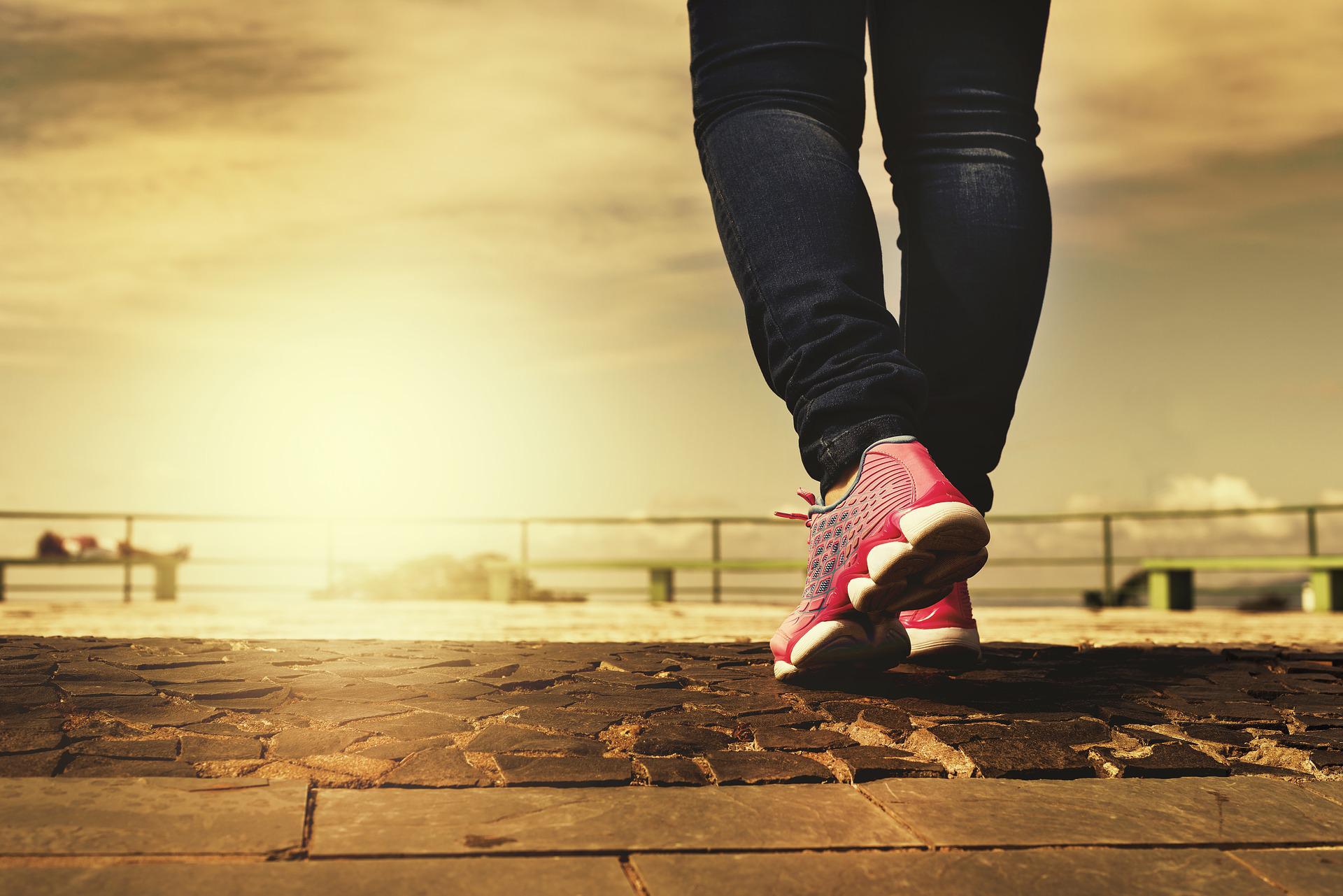Movement Simplified
“And exercise thy lasting youth defends.”
—Walking the Streets of London by John Gay
Many wise people refer to exercise or, more broadly, movement as a fountain of youth. Via the use-it-and-keep-it principle, movement keeps us alive and well.
Kids naturally move a lot and in a large variety of ways. Movement, it seems, comes quite naturally to us humans—until it doesn’t. It stops coming naturally for a lot of people when it’s made to be miserable. When someone says, “No pain, no gain.”
The biggest challenge most people face when getting into exercise or getting back into exercise is thinking it has to suck in order to be beneficial.
The most important thing you can do to cultivate a sustainable exercise practice is to give yourself permission for it to be enjoyable, pleasurable, and fun.
The best exercise is exercise you’ll consistently do. The exercise you’ll consistently do is exercise you enjoy.
It’s All About Enjoyment
The single biggest reason why so few people consistently exercise is the idea, “No pain, no gain.”
We humans are wired to avoid pain of all kinds at all costs.
People don’t need to be pushed to exercise. People need to be encouraged to move their bodies in ways they enjoy, just like kids do.
People need to be encouraged by the idea, “No pain, all gain.”
That is, the idea that exercise can both be enjoyable when you do it and come with a wide array of benefits you get to enjoy for the rest of your life.
People need to be given guidance and support as they explore ways of moving their bodies they find enjoyable, pleasurable, and fun.
If you want to get into exercise or get back into exercise, I encourage you to reflect on these questions:
- When I was a kid, what kinds of movement did I enjoy?
- What kinds of movement have I discovered as an adult that I enjoy?
- What kinds of movement would I like to try?
- How could I make movement more enjoyable?
If you’re consistently moving your body, it hardly matters what you’re doing. People do great with strength training. People do great with walking, hiking, swimming, cycling, running, rowing, skating, and similar activities. People do great with yoga. People do great with basketball, racquetball, soccer, tennis, and similar sports. There are many ways to meet your movement needs.
The key is finding ways to move your body you truly enjoy. Of course, not everyone falls in love with exercise right away. Sometimes a person first finds some movement they can tolerate. As they build fitness and keep letting enjoyment be their guide, they often move into liking and eventually loving exercise.
Other great questions to ask yourself include:
- Do I prefer to exercise outdoors or indoors?
- Do I prefer to exercise by myself or with others?
- What times of the day does exercise feel best to me?
Many people think the keys to getting themselves to exercise are:
- Continually weighing the pros and cons of exercising and not exercising
- Sheer willpower
They’re convinced they can get themselves to exercise by arguing for its importance and telling themselves to “Suck it up.”
But scientific evidence demonstrates two facts:
- People overestimate their ability to convince and will themselves to exercise.
- People are more likely to motivate themselves to exercise by leaning into enjoyable experiences.
Here’s how the researchers who wrote a review of scientific evidence about exercise motivation put it:
“Key points:
- Interventions to promote physical activity frequently rely on effortful cognitive processes that are burdensome.
- Pleasant affective processes can provide proximal intrinsic rewards that motivate physical activity.
- Automatic affective evaluations of physical activity (‘gut reactions’) are distinct from reflective attitudes toward physical activity.
- People with more positive automatic affective evaluations of physical activity are more active.
- Automatic affective evaluations are modifiable and represent a promising new target for interventions to increase physical activity levels.” (1)
Making an “automatic affective evaluation” is science speak for doing something because it feels good.
Remember, we humans are wired to avoid pain. We’re also wired to seek enjoyment, pleasure, and fun. When you let enjoyment, pleasure, and fun be your guide, you’re much more likely to start exercising and keep exercising.
Two interesting questions to consider are:
- Why do people tell kids to sit down and be still and tell adults to get up and get moving?
- Why do kids go to playgrounds and adults go to gyms?
We’re born with an innate love of moving our bodies. For many of us, it gets systematically squashed. Then we wonder why it’s so hard for many adults to get into exercise or to get back into exercise.
The solution is to let enjoyment be your guide. To design your own custom “playground” by leaning into moving your body in ways you thoroughly enjoy.
Movement with Life in It
Unfortunately, many people think of exercise merely as a way to “burn calories”.
While expending energy is important, for the maximal benefits of movement, I encourage you to do movement with life in it.
Imagine someone in their basement using an elliptical machine while watching reality television. Their focus is on passing the time and “burning some calories”. They can’t wait for it to end.
Now imagine someone walking in a beautiful park for the first time with their friend of many years. They can’t wait to do it again. And there’s a lot more going on physiologically too. They’re walking up and down rolling hills. They’re breathing in fresh air. They’re exposed to sunlight. They’re walking on varied terrain including dirt trails, grass fields, and a beach. They’re stepping over and balancing on rocks and roots. All the while, they’re having a stimulating conversation and connecting and bonding with their friend.
There’s “burning calories” and there’s movement with life in it.
All movement can be beneficial. Don’t let me dissuade you from any movement. But let me encourage you to do movement with as much life in it as possible whenever possible.
Some very interesting scientific studies that’ve been conducted about movement and dementia reveal a great deal about the power of movement with life in it.
It’s been known for a long time that exercise reduces your risk of dementia.
It’s also been known for a long time that doing things like learning a language or learning to play an instrument reduces your risk of dementia.
Some researchers got curious about combining the two. The idea that emerged was to study what effect dancing has on preventing dementia.
Dancing is like most exercise or, more broadly, movement in that it uses your muscles and increases your heart rate. And it’s so much more than that. When you’re dancing, you’re coordinating your movements with music; you’re often coordinating your movements with at least one other person; you’re often learning new steps; you’re often connecting with, and maybe even bonding with, at least one other person; and you’re usually having a great time.
It turns out dancing lights up your brain like crazy. It turns out this helps prevent dementia. Here’s how the researchers of a scientific study about dancing and dementia summarized their findings:
“Compared to activities such as exercising, walking or playing an instrument, dance has the advantage of combining several key features, each well-documented to have beneficial effects: dancing activities include physical exercise, but can be performed at different levels of expertise, resulting in a high compliance and motivation, with only a few dropouts. Furthermore, dancing activities include social and emotional interactions as well as cognitive requirements. Moreover, our present data show that even moderate doses of physical activity, which are not sufficient to affect cardio-respiratory performance, can in combination with these other features have beneficial effects on cognition, attention, posture and balance, and sensorimotor performance, as well as subjective well-being. Given these findings, dancing activities seem to be a highly appropriate choice of intervention to ameliorate age-related deterioration by enforcing and maintaining plasticity processes, thereby contributing to successful aging.” (2)
We can extend this idea in very powerful ways. What other kinds of movement are dynamic like dancing? What other ailments does movement with life in it prevent?
Movement with life in it keeps you alive and well. It adds years to your life and life to your years.
An Evolutionary Perspective
Our hunter-gather ancestors moved all the time.
Walking, running, jumping, climbing, throwing, and other movement was part of their regular patterns of securing food.
Bending, twisting, reaching, lifting, carrying, and other movement was part of their regular patterns of making clothing and shelter as well as parenting.
You wouldn’t find a hunter-gather sitting at a desk, behind the wheel of a car, or on a couch.
Contemporary sedentary lifestyles have led to marked declines in mobility, coordination, strength, and stamina.
The good news is as soon as you start moving, you start regaining your natural fitness.
A good workout plan really helps, and some good nonexercise movement helps too. Nonexerise movement includes activities like dancing, gardening, commuting on foot or by bicycle, and similar activities.
Even if you do awesome hour-long workouts six days a week, if you’re sitting most of the rest of the time, you might still be subject to some of the problems associated with a sedentary lifestyle.
Many people think exercise offsets sitting, but scientific evidence tells a different story.
Here’s how the researchers who conducted a scientific study about sitting summarized their findings:
“In conclusion, in this nationally representative sample of adults, daily time spent sitting was associated with an elevated risk of all-cause and cardiovascular disease mortality. Of particular note, the association between sitting time and mortality was independent of leisure time physical activity levels and BMI. Current physical activity guidelines for adults are focused on increasing moderate-to-vigorous physical activity levels. The results of this study provide evidence to support the suggestion that recommendations to limit sedentary time may be important for public health. The findings of the study also support that physicians should counsel patients to not only increase their level of physical activity and maintain a normal body weight but to reduce the amount of time they spend being sedentary in general and sitting in particular.” (3)
Yes, it’s important to exercise. It’s also important to not spend too much total time sitting or to sit for long periods of time.
A great way to avoid sitting too much is to take breaks from work. Most people benefit from taking breaks from work for a multitude of reasons. Add breaking up sitting time and getting some movement to the list.
Doing some body-weight strength exercises, going for a short walk, doing some yoga, or having a short dance party are all good options.
You can think of these as movement snacks. Just like a food snack is a way to eat a relatively small amount of food, a movement snack is a way to do a relatively small amount of movement.
Excessive Exercise
Since exercise is clearly a fountain of youth, some people mistakenly assume more is better. But you can, in fact, have too much of a good thing.
When exercise becomes excessive, it’s similar to other chronic stressors: It puts a person’s body in a catabolic state, a state of breakdown. This can lead to sickness and even premature death.
In a culture that does everything to excess, it’s no wonder many people think the more exercise the better. But scientific evidence tells a different story.
Here’s how the researchers who conducted a scientific study about exercise load summarized their findings:
“In this prospective, observational study, which included 1,098 healthy joggers between 20 and 86 years of age who were followed up for 12 years, we compared the long-term all-cause mortality rates of light, moderate, and strenuous joggers with the long-term mortality rate of sedentary nonjoggers. We found a U-shaped association between jogging and mortality. The lowest mortality was among light joggers in relation to pace, quantity, and frequency of jogging. Moderate joggers had a significantly higher mortality rate compared with light joggers, but it was still lower than that of sedentary nonjoggers, whereas strenuous joggers had a mortality rate that was not statistically different from that of sedentary nonjoggers.” (4)
Most people don’t need to worry about exercising too much, but some people certainly do.
With exercise, think like Goldilocks: not too little, not too much.
Keep Moving to Keep Living Well
Remember:
- The best exercise is exercise you’ll consistently do. The exercise you’ll consistently do is exercise you enjoy.
- Don’t just exercise, do your very best to make movement a thorough part of your life. Use movement snacks to help you with this.
Author’s note: Hunter-gatherers are not only our ancestors. Some people live as hunter-gatherers today.
(1) Automatic Affective Evaluations of Physical Activity. Exercise and Sport Sciences Reviews, 2017, 10.1249/JES.0000000000000120.
(2) Superior Sensory, Motor, and Cognitive Performance in Elderly Individuals with Multi-Year Dancing Activities. Frontiers in Aging Neuroscience, 2010, 10.3389/fnagi.2010.00031.
(3) Sitting Time and Mortality from All Causes, Cardiovascular Disease, and Cancer. Medicine & Science in Sports & Exercise, 2009, 10.1249/MSS.0b013e3181930355
(4) Dose of Jogging and Long-Term Mortality. Journal of the American College of Cardiology, 2015, 10.1016/j.jacc.2014.11.023.
About Jason Gootman
Jason Gootman is a Mayo Clinic Certified Wellness Coach and National Board Certified Health and Wellness Coach as well as a certified nutritionist and certified exercise physiologist. Jason helps people reverse and prevent type-2 diabetes, cardiovascular disease, and other ailments with evidence-based approaches to nutrition, exercise, stress reduction, holistic wellness, and, most importantly, lasting behavior improvement and positive habit formation. As part of this work, Jason often helps people lose weight and keep it off, in part by helping them overcome the common challenges of yo-yo dieting and emotional eating. Jason helps people go from knowing what to do and having good intentions to consistently taking great care of themselves in ways that help them add years to their lives and life to their years.
Stay in the loop!
Subscribe today, and get wellness tips delivered straight to your inbox.





